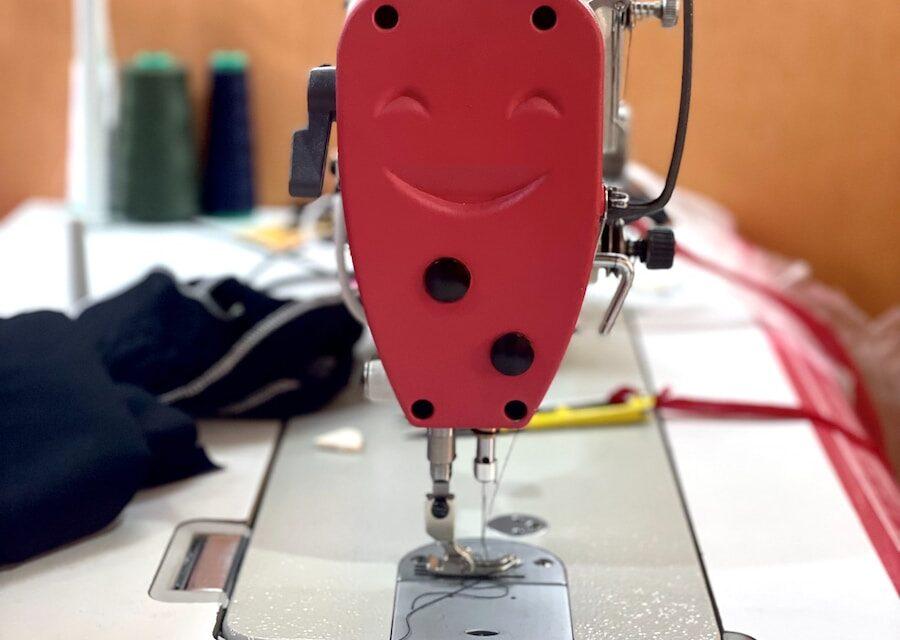The fashion industry is a highly dynamic and constantly changing landscape. It encompasses all aspects of clothing, footwear, accessories, and even beauty products. The industry has been around for centuries, but it has never been as big as it is today. In this article, we take a how can fashion designers become rich?
According to a recent report by McKinsey & Company, the global fashion industry is worth over $2.5 trillion, which makes it one of the largest industries in the world. Despite its size and growth potential, the fashion industry remains fiercely competitive.
Designers must continuously innovate and adapt to new trends to stay relevant in this rapidly-changing market. The fashion industry is constantly evolving due to new technologies that allow designers to create unique pieces that cater to a broad audience.
The Importance of Fashion Designers in the Industry
Fashion designers are undoubtedly essential players in the fashion industry. They are responsible for creating unique designs that capture the attention of consumers worldwide. A good designer has an eye for detail and can bring together different elements to create something aesthetically pleasing.
Designers must also have a good understanding of their target market’s needs and preferences when creating their designs. They must keep up with current trends while also predicting future ones accurately.
A talented designer can transform an everyday outfit into something extraordinary with creative cuts or unique embellishments. In addition to creativity and talent, successful designers must also have solid business acumen skills such as strategic planning or financial management capabilities; this helps them stay relevant in the competitive field while also making money from their craft.
Can Fashion Designers Become Rich?
The question on whether designers can become rich may be challenging because there’s no straightforward answer since it depends on several factors such as education level, experience networking skills with other brands/celebrities/businesses within different markets or online platforms among others. Some designers can earn vast sums of money and become household names with the right skills, knowledge, creativity and innovation.
Names like Ralph Lauren and Giorgio Armani amassed billions of dollars from their fashion empires. However, for every successful designer that becomes wealthy, there are hundreds more struggling to make ends meet.
It’s not always easy to make a career out of designing clothes or accessories because it requires a unique blend of artistic talent and business acumen. With this in mind, it’s important for designers to understand what they need to do to succeed in the industry and become financially stable while doing what they love.
Factors that Affect a Fashion Designer’s Income
Education and Experience
Education and experience are two critical factors that influence the income of a fashion designer. Many designers attend fashion schools to acquire the necessary skills needed to succeed in the industry. Formal education allows designers to learn about design techniques, fashion trends, pattern making, and textile production.
Additionally, gaining experience by working under established designers provides budding designers with essential skills needed to thrive in the industry. When it comes to education, attending prestigious fashion schools like Central Saint Martins or Parsons School of Design can significantly impact a designer’s earning potential.
These institutions have produced some of today’s most celebrated designers like Alexander McQueen and Marc Jacobs. However, education is not the only determinant of success in the fashion industry; experience is equally important.
Networking and Connections
In any industry, networking is crucial for career advancement and financial success; this applies to fashion design too. Establishing connections with people within the industry such as retailers, buyers, editors, influencers can increase visibility for a designer’s work leading to more sales opportunities.
Fashion events such as Fashion Week provides an opportunity for designers to showcase their work while also meeting potential buyers or collaborators who can boost their earnings through product distribution deals. Networking can also come from collaborating with other people within or outside the industry on projects that help bring awareness to their brand or work.
Brand Awareness and Reputation
Brand awareness plays an important role in determining how much a designer earns from their work. A well-known brand attracts customers who are willing to pay more money for clothing items created by that designer.
Reputation also plays an essential role in determining how much a designer earns as it influences clients’ willingness to pay premium prices for products associated with established brands known for exceptional quality. Designers who establish themselves as authorities in specific areas of fashion, such as streetwear or haute couture, can command higher earnings because of their unique and highly specialized skills.
Creativity and Innovation
The fashion industry thrives on creativity and innovation, so designers who can produce original and fresh designs can earn more. Designers who create unique pieces that stand out from the crowd gain more visibility leading to higher earnings. Fashion designers who stay up to date with the latest trends in design techniques, fabric production, and styling experience continued success in the industry.
Business Acumen
Having excellent business skills is crucial for a designer’s financial success. Designers must understand their target audience’s needs while also balancing profit margins when pricing their products.
Business acumen also involves creating a sustainable business model that allows them to manage finances well while still being able to invest in themselves for future growth. Several factors determine how much income a fashion designer earns.
Education and experience are important but not the only determinants of success; networking, brand awareness/reputation, creativity/innovation and business acumen play vital roles too. Fashion designers must develop these skills if they want to increase their earnings in today’s ever-evolving fashion industry.
Case Studies on Successful Fashion Designers
Coco Chanel: From Humble Beginnings to Global Icon
Coco Chanel is one of the most iconic fashion designers of all time. She was born into poverty in Saumur, France, but through sheer determination and talent, she rose to become a leading figure in the fashion industry. Her signature designs include the little black dress and the Chanel suit, which are still staples in many women’s wardrobes today.
Chanel’s success can be attributed to several factors. First, she had a keen eye for design and was able to create pieces that were both functional and fashionable.
Second, she was a savvy businesswoman who understood the importance of branding and marketing. And third, she had a strong personal brand that resonated with women around the world.
Ralph Lauren: Building an Empire on American Style
Ralph Lauren is another fashion designer who has achieved great success in his career. He is known for his quintessentially American style, which combines classic designs with modern sensibilities. Some of his signature creations include polo shirts, khaki pants, and blazers with brass buttons.
Lauren’s success can be attributed to his ability to create a lifestyle brand that embodies American ideals of freedom and individuality. He has also been successful at expanding his brand into other areas such as home goods, fragrances, and accessories.
Giorgio Armani: The Power of Simple Elegance
Giorgio Armani is an Italian fashion designer who has become famous for his minimalist designs that emphasize clean lines and simple elegance. His signature style has earned him numerous awards over the years including several CFDA awards.
Armani’s success can be attributed to his unique vision for fashion that blends traditional Italian craftsmanship with modern sensibilities. He also has a keen eye for detail and quality, which has helped him create pieces that are both timeless and durable.
Vera Wang: Bridalwear Royalty
Vera Wang is a fashion designer who has become famous for her bridalwear designs. She began her career as a figure skater before transitioning to fashion design.
Her signature style includes romantic, feminine designs with intricate details and delicate fabrics. Wang’s success can be attributed to her unique approach to bridalwear that emphasizes the individuality of each bride.
She is also known for her attention to detail and ability to create pieces that are both elegant and modern. In addition, she has successfully expanded her brand into other areas such as fragrance, home goods, and even ice skating costumes.
Diversification of Product Lines
One of the most effective ways for fashion designers to increase their income is by diversifying their product lines. This means expanding beyond their signature collection and creating new products that cater to a wider audience. For example, a designer who specializes in women’s wear can branch out into men’s clothing or accessories.
By doing this, they can reach new customers and increase their revenue. Another way for designers to diversify is by creating different price points within their existing product lines.
This allows them to cater to customers at different income levels without sacrificing quality or craftsmanship. For instance, a designer might create affordable pieces for everyday wear while still offering high-end couture pieces for special occasions.
Diversification can also mean exploring new materials or techniques that are outside of the designer’s usual repertoire. This adds novelty and innovation to the brand while enticing customers who may be looking for something fresh and unique.
Collaboration with Other Brands or Celebrities
Collaborations with other brands or celebrities are another strategy that fashion designers can use to increase their income. These partnerships provide exposure and access to new audiences while also creating buzz around the brand.
Collaborating with other brands allows designers to tap into different markets or customer segments that they may not have otherwise reached on their own. For example, a designer who specializes in luxury clothing may collaborate with a more affordable retailer to produce a capsule collection that is accessible to a wider audience.
Working with celebrities is another effective way for designers to boost visibility and credibility. When a celebrity wears a designer’s clothing on the red carpet or in public appearances, it generates publicity around the brand and increases its desirability among fans.
Improving Online Presence through Social Media Marketing
In today’s digital age, having an online presence is essential for any business—including fashion designers looking to increase their income. Social media platforms such as Instagram and Twitter provide designers with a powerful tool to connect with fans and potential customers while also showcasing their work. Through social media marketing, designers can promote their products, share behind-the-scenes glimpses into their creative process, and engage directly with followers.
By posting high-quality images or videos of their designs on these platforms, they can attract attention from fashion influencers and expand their reach beyond traditional marketing channels. Social media also provides a platform for designers to collaborate with influencers or other brands.
For example, a designer may partner with a popular fashion blogger to showcase their designs in a sponsored post or collaboration. By doing so, they increase visibility and reach new audiences.
Expanding into New Markets
Expanding into new markets is another way for fashion designers to increase their income. This can mean expanding geographically by opening new stores or entering new markets outside of the designer’s home country.
Alternatively, expanding into new markets can mean targeting different customer segments within the same market. For instance, a designer who specializes in evening wear may begin creating more casual clothing for everyday wear.
Before entering any new market, it is important for designers to conduct thorough research on local consumer preferences and cultural norms. This ensures that the brand’s products resonate with the local audience while also maintaining the integrity of the designer’s brand identity.
Overall, there are many strategies that fashion designers can use to increase their income and achieve financial success in this highly competitive industry. By diversifying product lines, collaborating with other brands or celebrities, improving online presence through social media marketing, and expanding into new markets—designers can grow their businesses while also staying true to their unique vision and creative expression.
Conclusion
Reiteration of the Importance of Fashion Designers in the Industry
Fashion designers play a vital role in the fashion industry. They are responsible for creating unique and innovative designs that set fashion trends and establish new styles.
Fashion designers also have a significant impact on the economy, as their creations generate billions of dollars in revenue each year. Without fashion designers, there would be no fashion industry.
Summary of Factors that Affect a Designer’s Income
In this article, we have discussed several factors that affect a fashion designer’s income, including education and experience, networking and connections, brand awareness and reputation, creativity and innovation, and business acumen. These factors are critical to a designer’s success in the industry.
It is essential for aspiring designers to understand these factors when pursuing a career in fashion design. By developing these skills and attributes, they can increase their chances of achieving financial success as well as establishing themselves as influential figures within the industry.
Potential for Fashion Designers to Become Rich with Strategic Planning and Hard Work
Despite the challenges that come with pursuing a career in fashion design, there is still significant potential for designers to become rich through strategic planning and hard work. By combining talent with practical skills such as business acumen and networking abilities – successful designers can create lucrative careers within this vibrant industry. It is important to remember that becoming rich requires dedication, perseverance – often involving long hours – numerous setbacks along with risks but utilizing creative ideas can create opportunities that will lead to success.
—although becoming rich can seem like an unattainable goal for many up-and-coming designers—it is possible when all critical aspects are considered carefully: education/experience; networking/connections; reputation; creativity/innovation; business acumen/determining markets. With determination comes prosperity!










